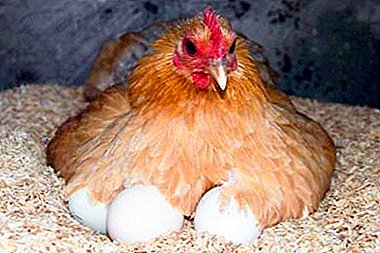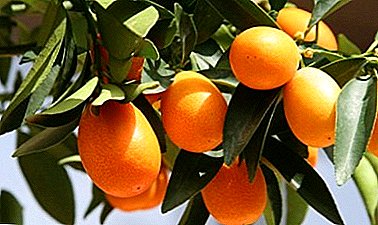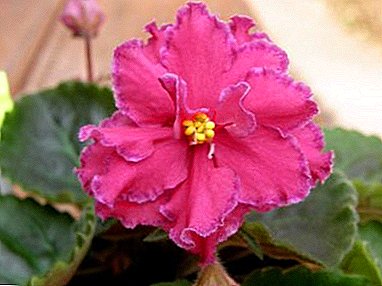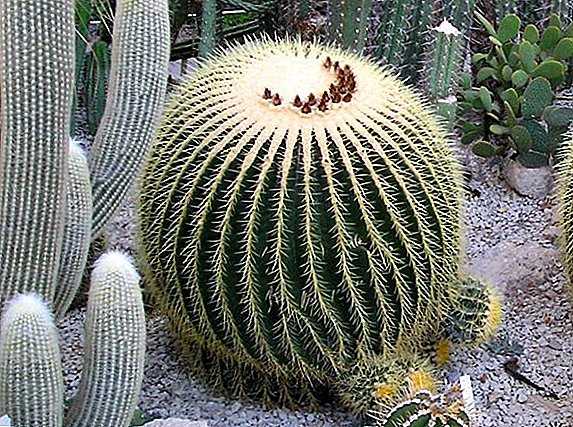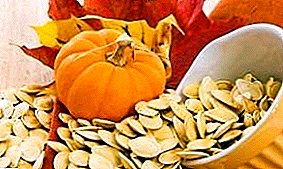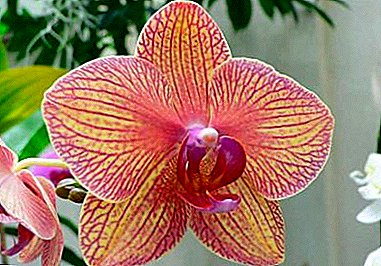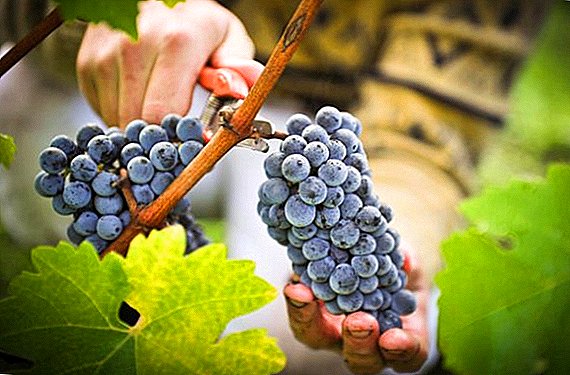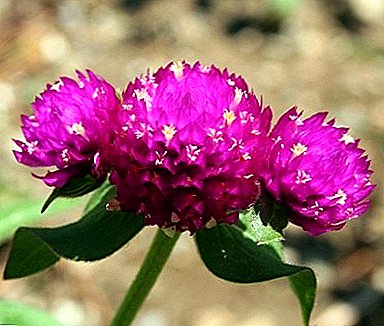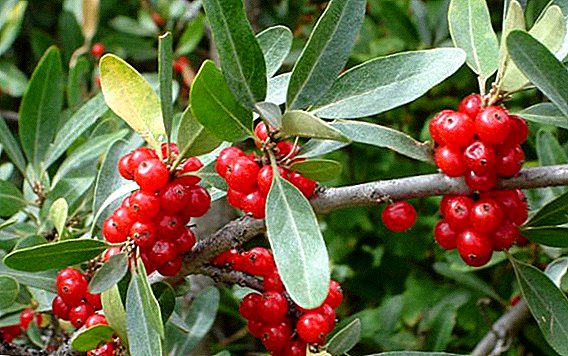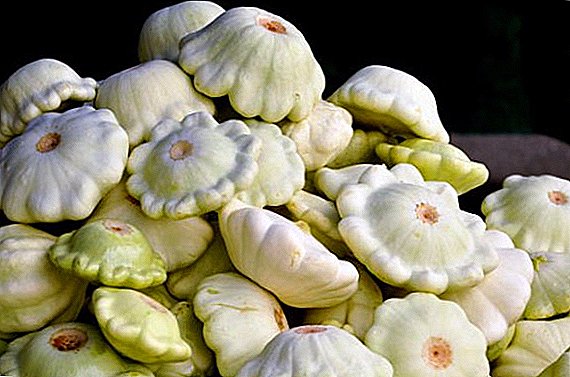 Squash is a one-year thermophilic herbal-like bushy South American vegetable with pumpkin fruit. Distributed throughout the world. We have known since the mid-end of the XIX century. It is successfully grown and used in cooking - all kinds of heat treatment, pickling, canning. Some types of squash are grown for ornamental purposes.
Squash is a one-year thermophilic herbal-like bushy South American vegetable with pumpkin fruit. Distributed throughout the world. We have known since the mid-end of the XIX century. It is successfully grown and used in cooking - all kinds of heat treatment, pickling, canning. Some types of squash are grown for ornamental purposes.
Squash: variety variety
The varieties of squash are early, middle and late ripening. Among them are those that are suitable for canning, and those that are used only for the preparation of homemade dishes. Squashes are also divided by size, shape and color.
Did you know? Squash in any form is well absorbed by the human body.
White varieties of squash
These are vegetables with peel and flesh of a white, off-white or slightly greenish hue.
White 13
Mid-season unpretentious cold-resistant variety with good yield - 3-4 kg / m2 from one plant. On average, the weight of a young pumpkin is 85-100 g, diameter is 6-7 cm, the fruit can reach a mass of 0.5 kg. The form is a plate with slightly pronounced teeth on the edge. The peel is pale-green-white, firm, shiny. The taste is neutral, medium density pulp. Food ripeness - in 65-70 days from the moment of shoots.  Fruits are harvested 6-7 weeks after flowering. They are equally suitable for cooking and for preservation. And to the question, what varieties of squash to plant, to grow seamlessly in our climatic conditions, the answer is White 13. This variety is one of the most common among farmers and is considered the best under open ground. It is appreciated for high yield, ease of care and storage capacity.
Fruits are harvested 6-7 weeks after flowering. They are equally suitable for cooking and for preservation. And to the question, what varieties of squash to plant, to grow seamlessly in our climatic conditions, the answer is White 13. This variety is one of the most common among farmers and is considered the best under open ground. It is appreciated for high yield, ease of care and storage capacity.
Important! Sometimes the squash is called a mini-pumpkin or a plate pumpkin. But this is a mistake. Squash belongs to the pumpkin family, but is an independent species.
Umbrella
Early ripe, semi-mustache, cold-resistant, large - with a mass of 300-400 g. Productivity 4-5 kg / m2. Clean when the diameter of the fruit - 8-10 cm. Maturation - 45-55 days. Pumpkin - bell-shaped with protuberances on the body. Jagged margin expressed. The color of the skin is pale greenish or whitish. The surface is hard and smooth. The flesh is dense, white, the taste is slightly sweetish. The stability and transportability are low. Suitable for daily cooking and canning. 
Disk
Kustovoy, early ripe, cold-resistant. Productivity 3-4 kg / m2. Maturation - 40-50 days. Pumpkin - up to 400 g. Form - discoid, surface - segmented, serration - weak. White colour. Peel - smooth, firm. The flesh is medium in density, mild, slightly crispy, neutral in flavor, white. Keeping ability is good. Suitable for daily cooking, canning. 
Note! The disk is prone to powdery mildew.
Cheburashka
Early, highly cold-resistant, strongly branchy-bush variety with a long period of fruiting. Ripening - 36-40 days after germination. The weight of a pumpkin is 250-450 g with a diameter of 9-10 cm. The form is dish-shaped with a slightly cut wavy edge. Peel - hard, white. The flesh is tender, tasty, dense. Fruits and canned and cooked. Perfect for growing in the northern regions. 
Did you know? Squashes are generally widely used to prepare a wide variety of dishes, and white varieties are universal. They are suitable for all types of culinary treatments.
The best varieties of yellow-orange squash
These are bred varieties containing carotene, based on white types of squash. In addition to excellent taste and nutritional qualities, they are useful for diseases of the eyes, skin, and just as an additional source of vitamin A. They also contain lutein, no less important for vision and necessary for the prevention of vascular pathologies and the neutralization of free radicals. The best varieties of squash of this group:
Fouette
Shrub, medium early - with maturation in 50-55 days. Form - well leveled, dish-shaped, edge - scalloped. Weight - 270-300 g. Peel - bright yellow-orange, solid. The flesh is tasty, tender, dense, white. Used for cooking, canning. Good quality.
Sun
Compact bushy, mid-season, high-yielding, small-fruited variety. Ripening - 60-65 days after germination. Pumpkin - cupped. Weight - 250-300 g. The color of young fruits - yellow, ripened - rich orange. The flesh is very tasty, delicate, beige shades. Suitable for cooking, marinating, storage. The variety is resistant to powdery mildew. 
Did you know? Squashes are often introduced into therapeutic and dietary nutrition. Useful for diseases of the stomach, intestines, anemia, hypertension, etc.
UFO
Early ripe, bush, with a good yield grade. Maturation - for 42-45 days. Pumpkin - disc-shaped, weighing 400-450 g. Color - rich yellow-orange. The flesh is dense, thin, tasty, yellowish in color. Used for cooking and canning. 
Dark green varieties of squash
Chunga changa
Early ripe, cold-resistant, compact, bush. Maturation - 42-45 days. Pumpkin - 400-450 g. Form - disc-like, wavy along the edge. Peel - dark malachite color. The flesh is juicy, tasty, creamy.
Gosh
Early ripe, tall, branched, cluster, strongly expanding variety. Maturation 43-50 days. Pumpkin mass - 300-400 g. Form - discoid with grooves and a lip edge. The young fruits are dark green, and the ripe ones are black. The flesh is milky or creamy, dense, crunchy. Suitable for daily cooking, pickling, canning. 
Did you know? The best predecessors for the squash - carrots, potatoes, greens, siderata, tomatoes, peas, onions, radishes.
Purple Bingo Bongo
Early ripe, compact, strong-growing, bush variety. Maturation - 40 days. Form - discoid with weakly bonded edge. Pumpkin mass - 550-600 g. Pulp - tasty, tender, juicy, white. It is used for cooking every day, storage, canning.

Here are the most popular patrons of farmers, their varieties and a brief description for each. In fact, varieties of squash is much more. And when growing each has its pros and cons. All described varieties are suitable for our climate, take root quickly, grow and give good yields.


